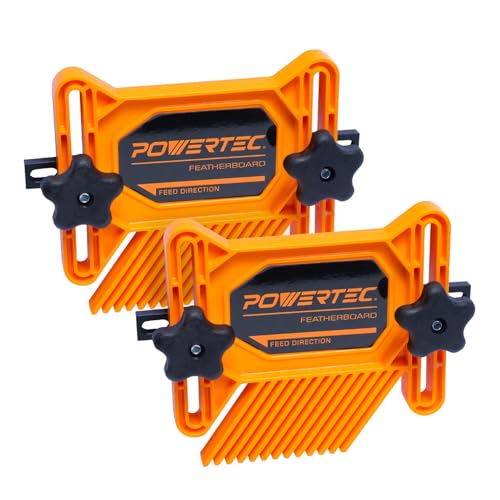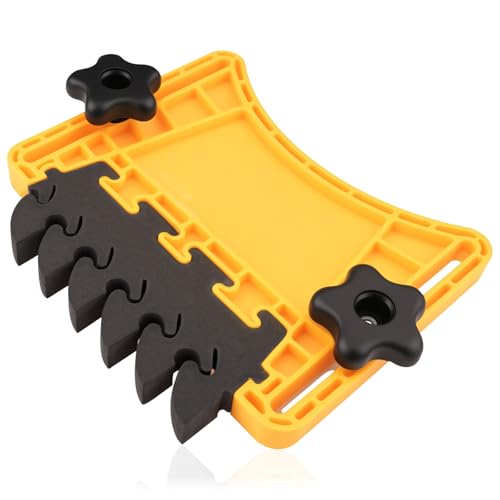The table saw is often considered the heart of the woodworking shop.
It’s incredibly powerful and precise – but also one of the most dangerous tools.
Every year, more than 60,000 injuries are linked to table saws, including lacerations, amputations, and serious kickbacks.
This guide covers 13 common mistakes woodworkers make when using a table saw and offers clear, practical tips to help you avoid them.
Understanding the Risks: Kickback and Lacerations
The most obvious danger is cutting injuries—anything from minor cuts to finger amputations.
But one of the deadliest and most sudden threats is kickback.

Kickback happens when the wood gets pinched between the blade and fence, sending the workpiece flying backward toward the operator.
It’s fast, forceful, and hard to react to in time. Twisted, warped, or improperly fed boards are common causes.
1. Proper Table Saw Setup: Aligning the Blade and Fence
Safe cuts start with good alignment. Your blade should be perfectly parallel to the miter slot, and the rip fence should match both.
Misalignment increases the chance of binding and kickback.
Use a square or a dial indicator to check that the same blade tooth touches a straight edge at the front and back.
Do the same for the rip fence. Some fences allow fine-tuning with adjustment screws.
2. Avoid Reaching Over or Past the Blade
Never reach over the blade to grab a piece or adjust your material while the saw is running.
If the wood shifts or snags, it can pull your hand into the blade.
Always turn off the saw first, or use push sticks or blocks to move material safely.
3. Never Cut Freehand

Freehand cutting is extremely dangerous.
The blade cuts on both the front and back edges, so if the wood twists, it can catch and kick back.
Always guide your cuts with a fence, sled, or jig.
For irregular pieces like live edge slabs, use a custom sled or a straight-line rip jig to control the cut.
4. Use A Riving Knife

The riving knife sits just behind the blade and helps keep the kerf open during a cut.
This reduces the risk of binding and kickback.
Unless you’re doing a cut that absolutely requires it to be removed (like a dado stack), keep it in place.
5. Where to Stand for Maximum Safety
Your body position matters.
Stand just to the side of the blade, never directly behind it. If a kickback occurs, this keeps you out of its direct path.
Also, avoid standing on the “wrong” side of the fence.
That can create sideways pressure that leads to binding.
6. Adjusting Blade Height to Minimize Injury
Setting the blade height just above the workpiece reduces the amount of exposed blade and minimizes potential injuries.
A good rule of thumb is to raise the blade so the gullets (the valleys between teeth) just clear the top of the wood.
7. Handling Boards Wider Than They Are Long
Trying to rip short, wide boards can cause instability and twisting.
This increases the risk of binding and kickback.
Use a sled or miter gauge to guide these cuts. And never rely on the fence alone to position short stock.
8. Using Stop Blocks for Safe Crosscuts
A stop block attached to the fence (but ahead/before of the blade) allows you to make repeatable crosscuts without trapping the offcut.
This keeps it from getting pinched between the blade and fence.
Clamp your stop block in place and leave room for the offcut to fall away cleanly after the cut.
9. Choosing and Using Push Sticks Effectively
Push sticks keep your hands away from the blade.
Look for sturdy designs—thicker plastic or wooden versions work best.
Use a push stick with a heel to push the wood forward, and a second stick to apply downward pressure if needed.
Avoid pressing too hard directly down, which can break the stick and reduce control.
10. Avoid Pinching the Blade with Improper Pressure
Feeding the wood with the wrong pressure—especially pushing past the blade—can bind it and cause kickback.
Keep all your pressure behind the blade, and never push the material forward once it has passed the blade’s front edge.
11. Avoid Cutting Twisted, Warped, or Severely Cupped Boards Without Securing Them

Cutting unstable boards can lead to unexpected rotation, binding, and kickback.
If a board is warped, try to flatten it first or use jigs to hold it steady during the cut.
There are safe ways to flatten boards without a jointer—like using sleds on a planer or shims on a table saw.
12. Use Adequate Infeed and Outfeed Support
Large boards need support before and after the cut.
Without it, you may lose control of the wood, especially when trying to balance long pieces.
Roller stands, sawhorses, or custom tables help keep everything aligned and safe.
13. Cutting Thin Strips Safely
When cutting thin strips, don’t move the fence dangerously close to the blade.
Use a thin rip jig or featherboard instead.
Thin rip jigs ride in the miter slot and allow repeatable narrow cuts while keeping the workpiece stable. Featherboards apply side pressure to keep wood tight against the fence.
Featherboards: A Vital Safety Accessory
Featherboards are flexible safety tools that press wood against the fence or table and help prevent backward movement.
Position them ahead of the blade to maintain steady side pressure without forcing wood into the cut. They also reduce the need for extra push sticks.
Proper Personal Protective Equipment (PPE)
Even with great technique, accidents can happen.
Always wear PPE.
Safety glasses protect your eyes, dust masks or respirators protect your lungs, and aprons help shield your body during a kickback.
Don’t underestimate how much this gear can help if something goes wrong.
Final Thoughts: Build Safe Habits
Table saws are powerful and essential—but they demand respect.
Taking time to set up your saw properly, avoid common mistakes, and use the right safety equipment can prevent serious injuries.
Focus on consistency, body position, and preparation. These small choices stack up and make a big difference in the long run.
Last update on 2025-12-09 / Affiliate links / Images from Amazon Product Advertising API









